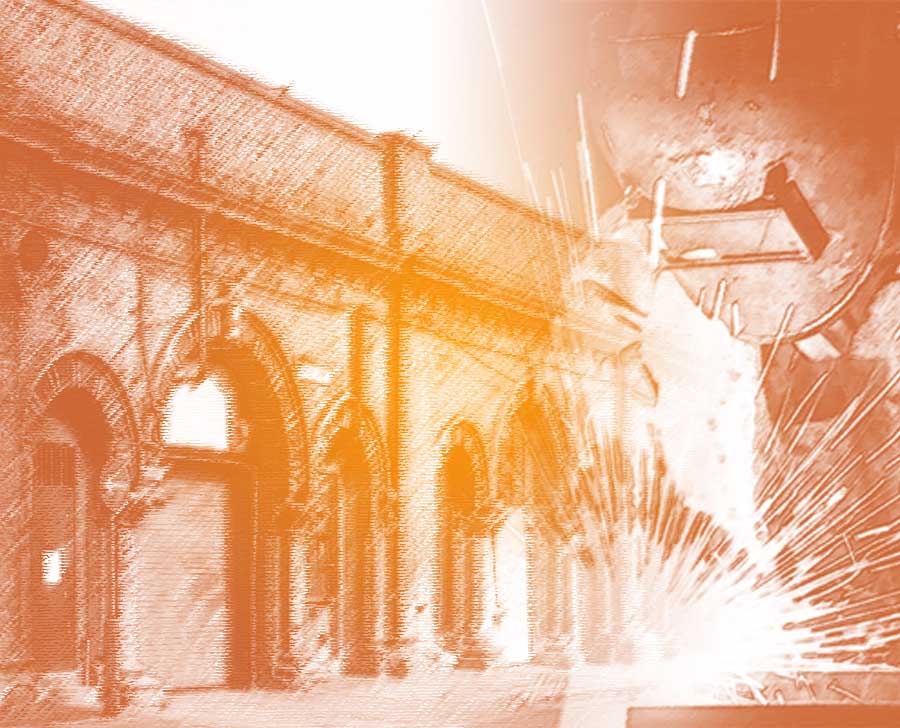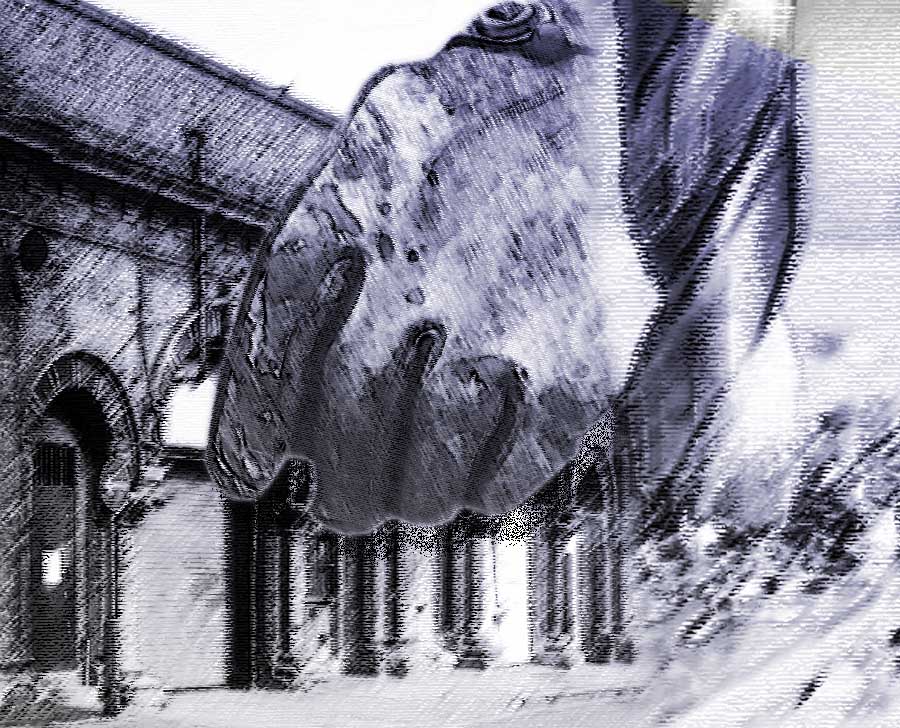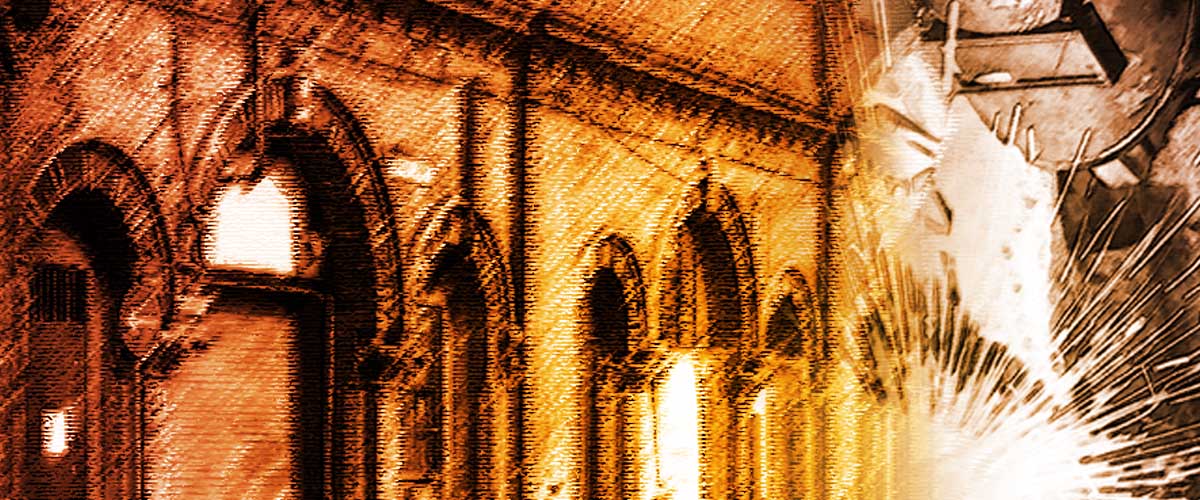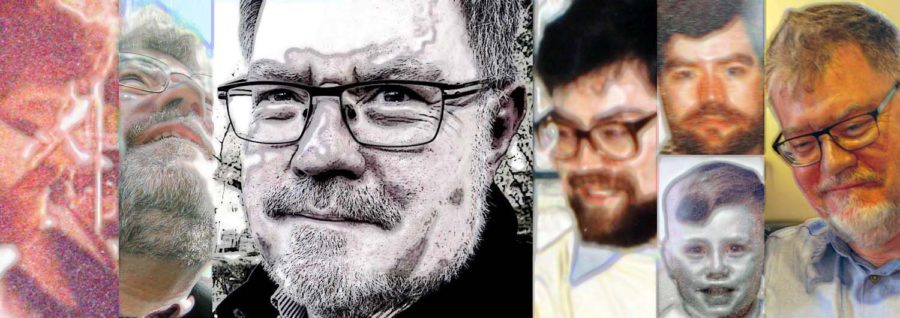A memoir: One of my first jobs after graduating from university, I worked for a steel fabricating company under the railway arches near Leeds central station.
N v S; Yorks v Lancs
The guy I was assigned to work with was one of the experienced welders. One of the middle-aged Yorkshireman. He wasn’t best pleased to have me as his assistant on this build. I was 22. I’d just graduated from Leeds University. Combined honours in history and English (Grade 3). And I was a southerner.
He picked me up from the workshop and drove me out to the site in one of the company’s little trucks. We were installing the steel supports for warehouse doors at a brownfield build on the outskirts of Leeds. Though I don’t remember the journey, or the sights through the window, I still remember the voluble wash of his contempt. He didn’t stop talking for the entire drive. A tirade of criticism about London, the country, the education system, the university, students, soft and useless southerners.
I let it wash over me. I’d been teamed with him previously and I was used to it, though I don’t think it had ever been this bad before, like a tidal wave. If I’d been more experienced or more sure of myself I might have asked why he’d got out of the wrong side of the bed that morning, or given him as good as he was giving me. But I wasn’t and didn’t. Just, at the very end of the journey when he pulled up and there was a slight pause, I managed to slip in one sentence.
“My mother’s from Lancashire.”
“Lancashire?” He said, as if he was stoking himself up for another round. “Lancashire! They’re worse!”
Leeds
I come from Brighton (Hove, actually). I was born and brought up on the south coast. But when I left home to study, I chose places half the country away for no reason I now remember. I was turned down by the University at York and I rejected an offer from Lancaster myself, so I ended up at Leeds. Generally speaking, I loved it. I liked the work, I liked the friends I made, I liked the city. So after I scraped through and graduated, I stayed on in town for another year as I cast about for my next direction.
I was lodging, first in a shared house, a back-to-back terrace in the Bayswater district, later in a room in a little Victorian town house near Hyde Park. My student money had come to an end and I needed work, but work wasn’t so easy to come by. I visited the labour exchange and read my way through the cards on the noticeboards. There wasn’t much I felt I was qualified for. Three years of studying history and English (with an elective in art history). Not very practical.
A fellow ex-student of history, Steve, an anarchist, was in a similar position. The labour exchange sent him off to work for an estate agent and property developer. He thought this was very funny.
Eventually the labour exchange sent me to the steel fabricating company.

Underneath the arches
The workshop was under the railway arches near Leeds station. I wonder if it still there? The arches may be; the steel fabricating shop probably not.
I’m not sure now if the workshop took up more than one arch. One is all I remember. The space was large and stretched far back, all the way through under the viaduct. At the back I remember a tall brick wall filling the arch. I can’t quite remember but I think the back exit must have been through a door in that back arch. It led to a small yard embraced by black brick walls, with gritty cinders and gravel underfoot. Out there was a little shed. Not a toolshed, but a place where we had some broken down chairs and a gas ring and brewed tea. That was my responsibility.
Teaboy
For the whole time I was there, when I wasn’t sent out to assist one of the welders on site, I would spend a large part of my time brewing tea. We had tea before we started work in the morning at 7. There was a tea break at around 11, tea at lunch time, a tea break in the middle of the afternoon at 3, and sometimes I’d be told off to brew a pot so we could have a mug before we broke off work at 5.
I got introduced to the tea brewing process as one of the first things I learned to do. You take a pan and you fill it with water. You spoon in the tea leaves (Tetley’s I think, or Yorkshire) and the sugar. Then you put it on the single gas ring in the shed, bring it to the boil and let it simmer a bit. When it’s a nice rich mahogany brown, take it off the heat and pour in the milk. This is usually from a bottle and fresh delivered in the morning, but if not (if the milk has gone off – there’s no fridge – or if we’re out of it) use evaporated milk from a tin. Strain the tea into the mugs.
The backyard was where the men would gather if the weather was fine, or they’d shelter in the shed from the rain. They would sit and drink their tea, smoke, do the crossword in The Sun. I could never think of words short enough, so I wasn’t much help, but it became a bit of a joke to ask me. I was the university graduate who couldn’t think of the words that they could.
The workshop space
The main entrance to the workshop under the arch was at the front. The arch itself was blocked by a metal frame holding tall, metal reinforced wooden doors that stood mostly open while we were working. Over the doors was a latticework holding panes of glass or pieces of wood (where I suppose the glass had broken and been replaced). The windows were dirty and never cleaned. Still, they let in light, even rays of sunlight when the sun stood at the right angle.
Outside there was a road shared between the different businesses in neighbouring arches. There was space enough for delivery lorries and our trucks to pull up. (The trucks were garaged elsewhere.) The space under the arch always seemed in a bit of a mess, but it was probably quite well laid out. Lathes, drills and other machines for working metal, lots of space for storing pieces of steel: bars, plates, sheets and girders. And then space to actually assemble some of the pieces that we were fabricating. Most of the assembly would be done out on site, but some pieces were more efficiently put together in part in the fabrication space.
The workshop was quite dark. There were electric lamps for much of the time, naked bulbs hanging down on long cables from the vaulted ceiling. But I remember how the late afternoon sunlight slanted in through the windows over the front doors. I see dust moats moving in the sunlight.
Loose gloves
Thinking about it now I remember when I nearly lost my thumb. I was standing at a drill and putting holes into a strip of steel. The bit of the drill looked off kilter and, without thinking, I put my gloved hand on it to try and straighten it. It grabbed my glove and turned and I felt how my hand twisted and how my gloved thumb was being pulled.
The gloves were too big for me and when I released my grip my hand slipped out of the glove. I stood in a bit of stupefaction, watching the glove caught in the drill bit, turning in the late afternoon sunlight. And then a feeling of what might have happened washed over me and I switched the drill off. My knees wouldn’t hold me up and I had to squat down on the dirty floor by the machine.
One of the other guys saw what had happened and came over to see if I was alright.
“If the glove hadn’t been so loose, I’d have lost my thumb,” I said.
“Yeah, that’s why they’re loose,” he said. He was a Scouser and sounded like one of the Beatles. George Harrison, I decided. He also got a lot of flack from the “real Yorkshiremen”.
“Why don’t you go and make some tea?” he suggested.
So that’s what I did.





